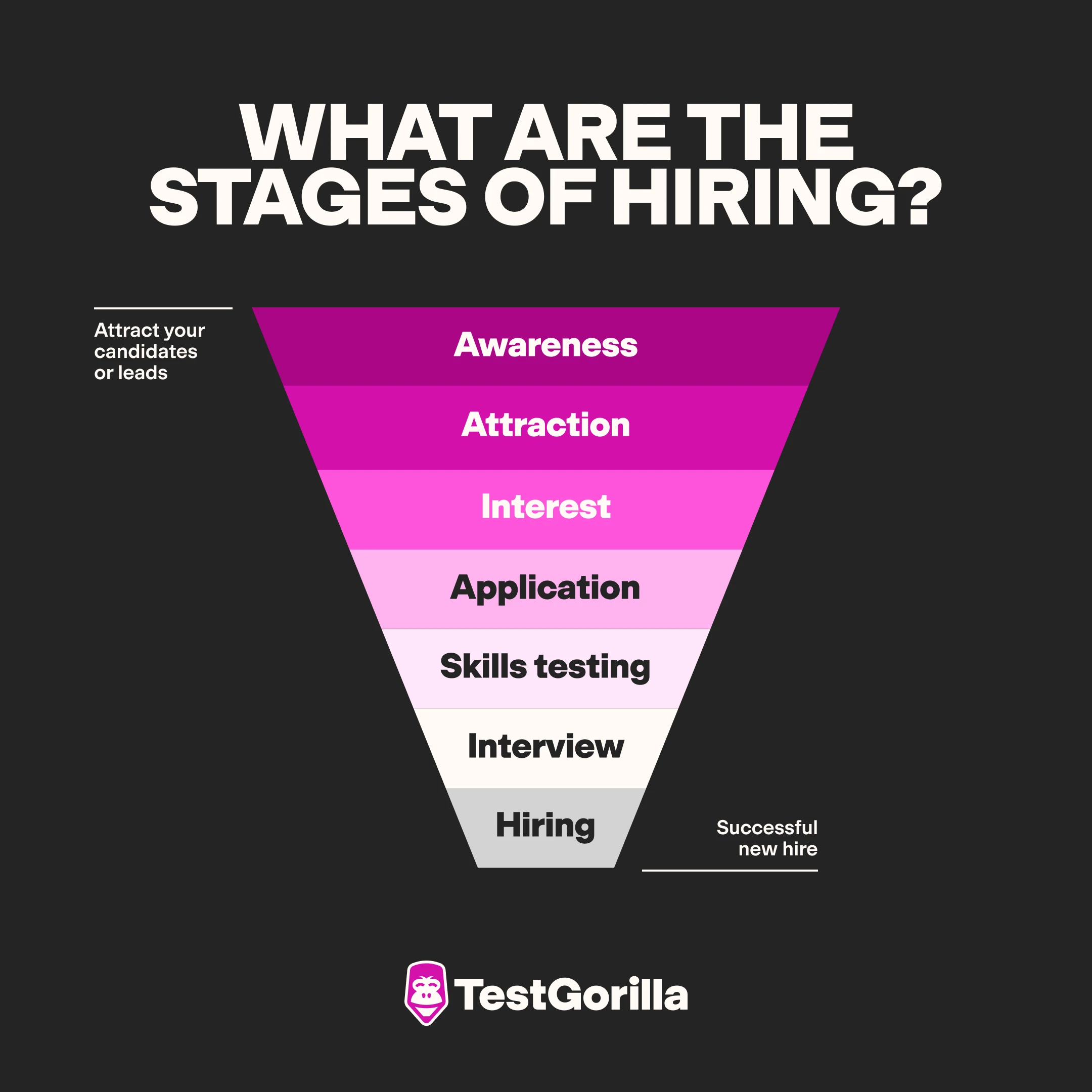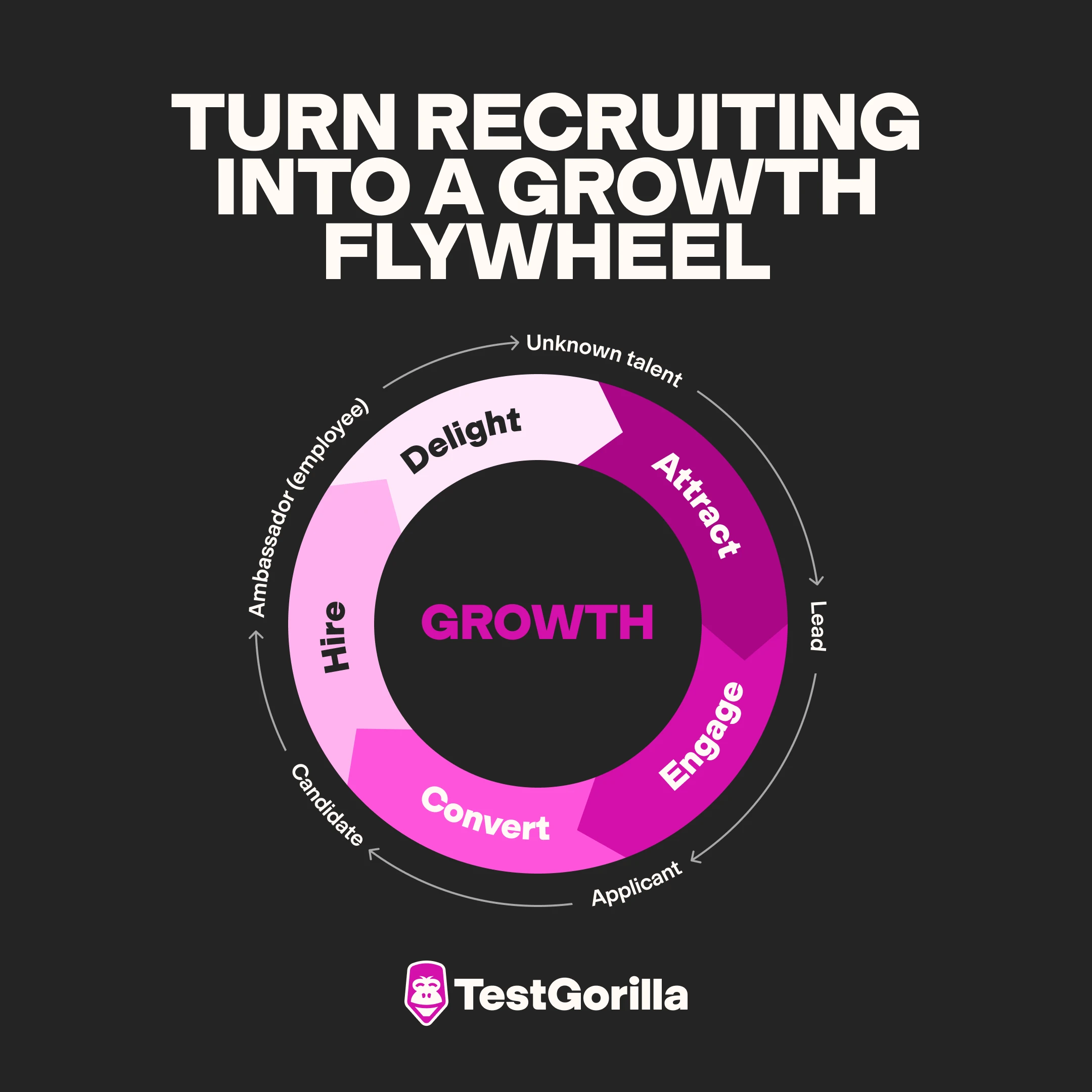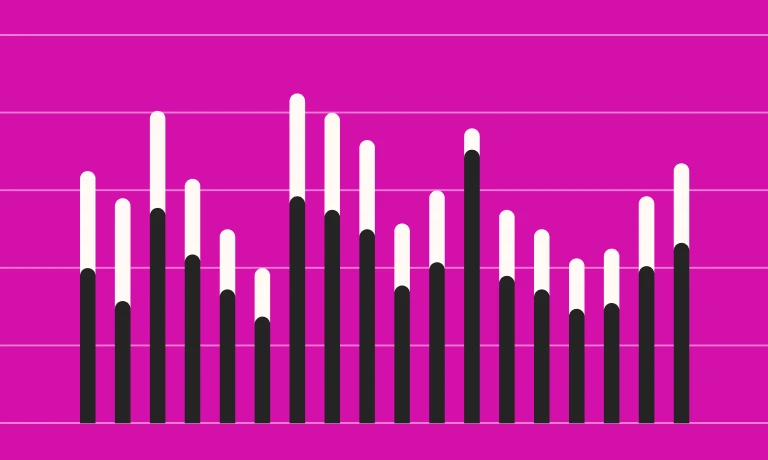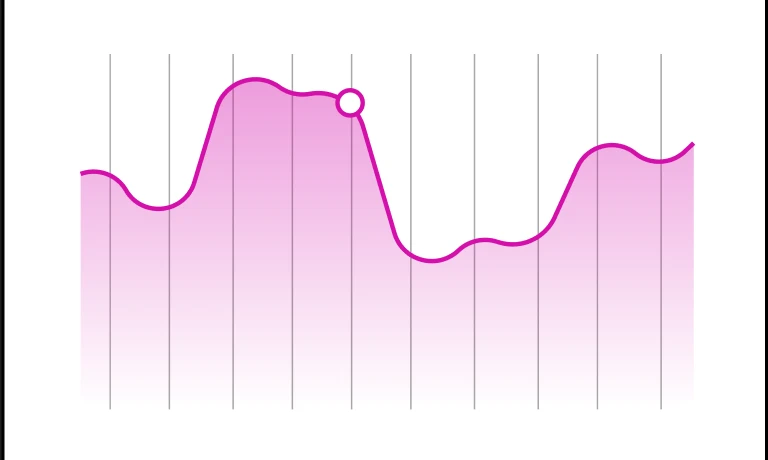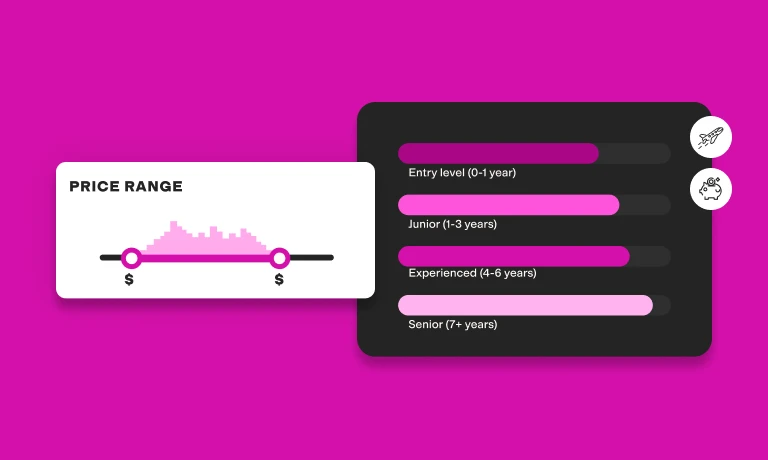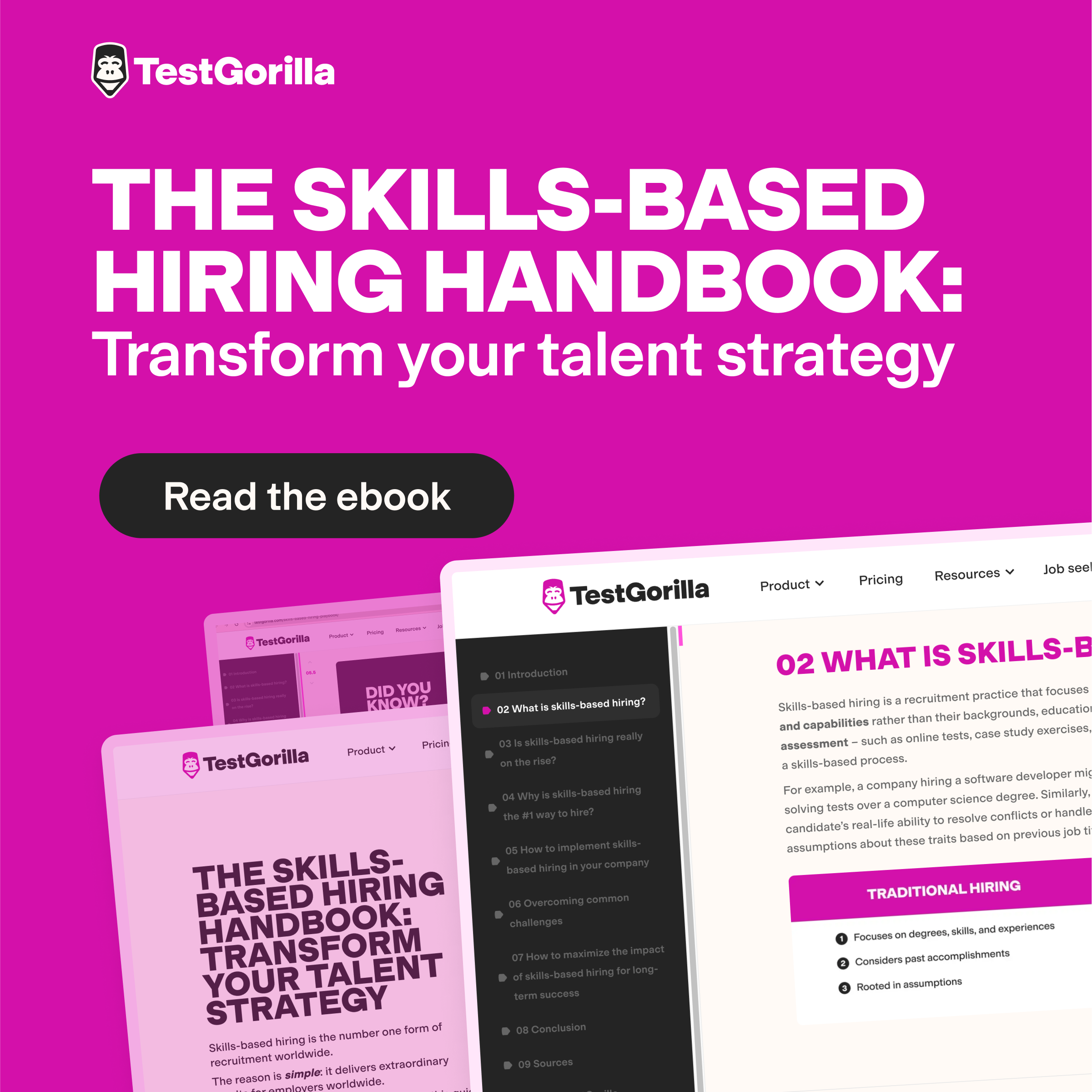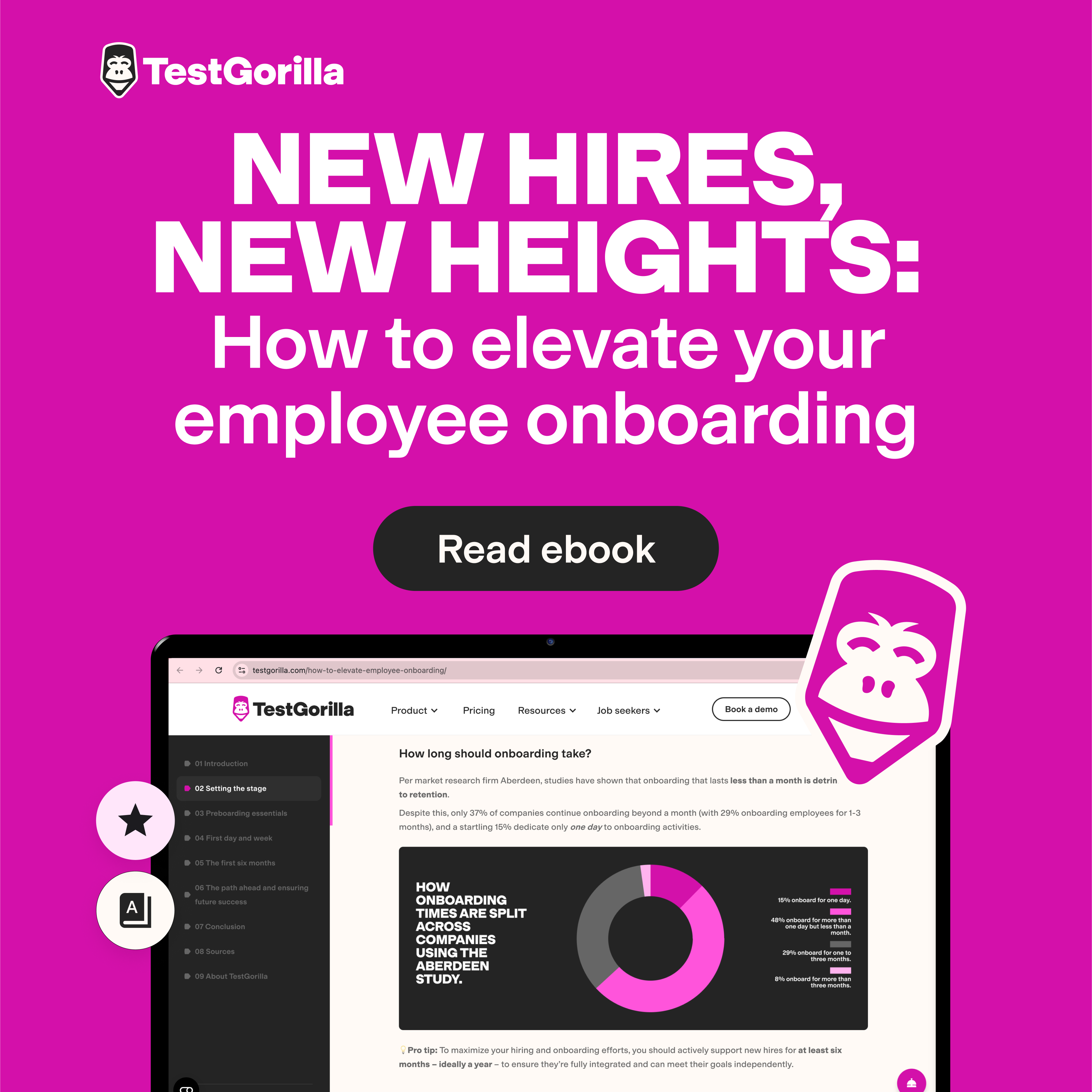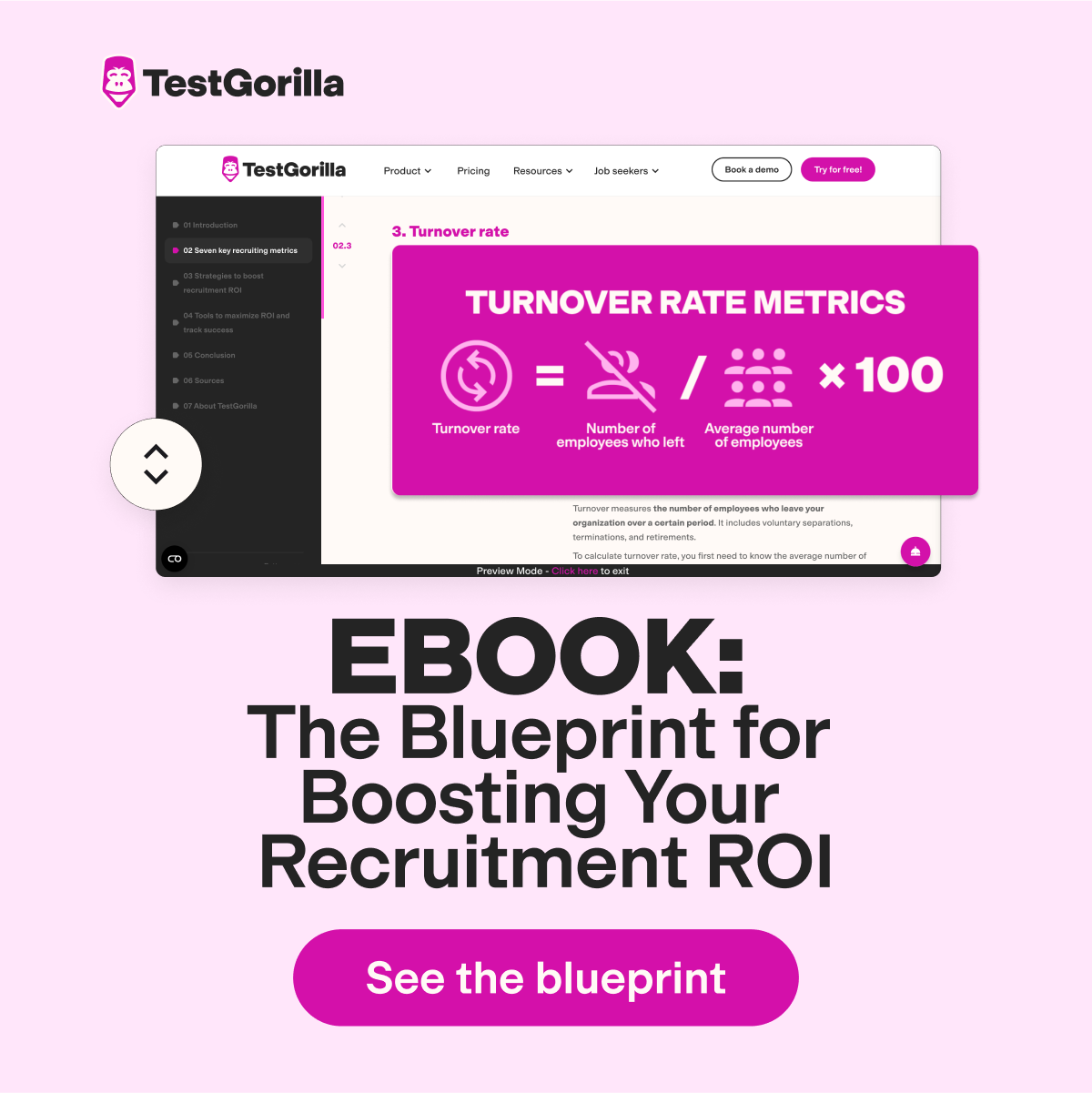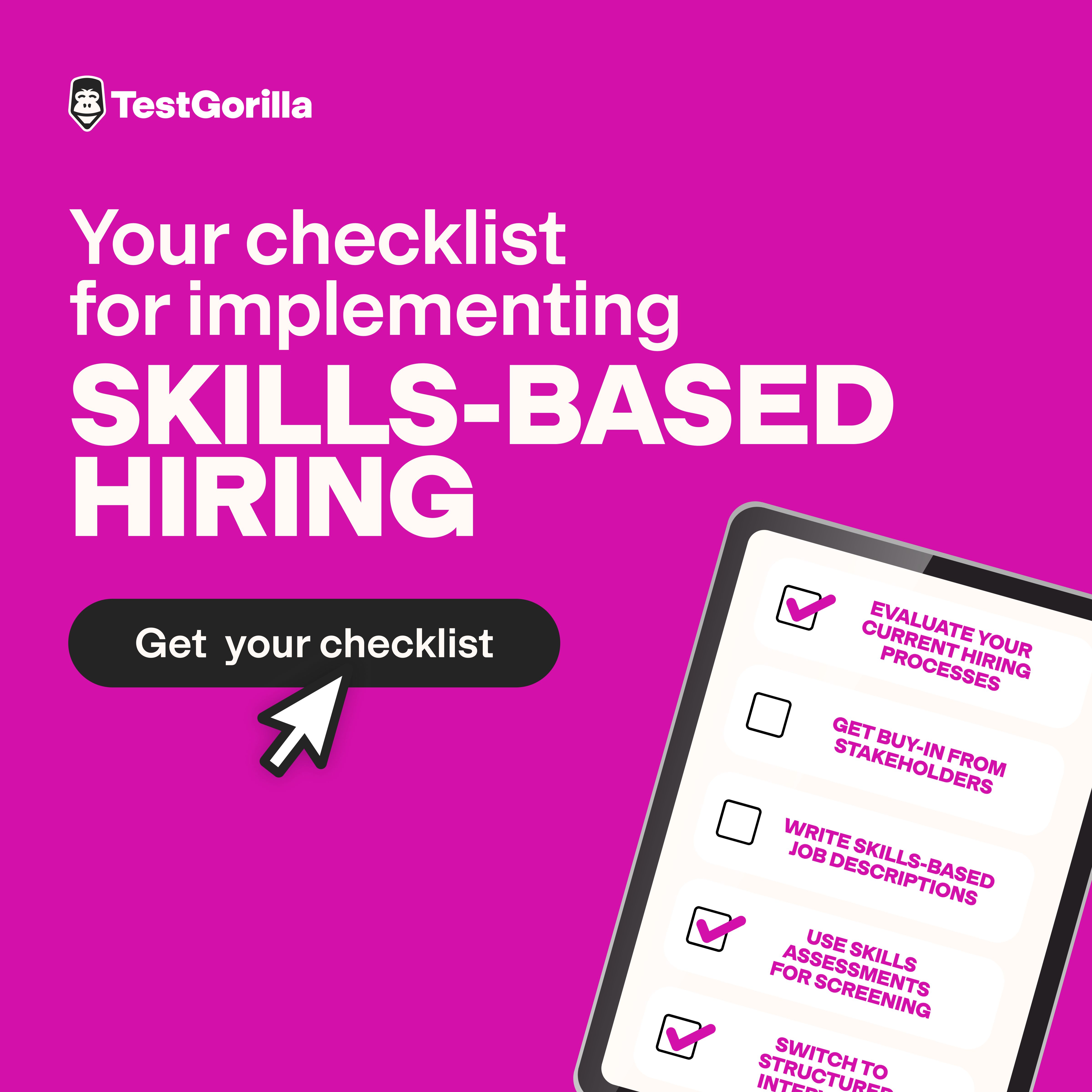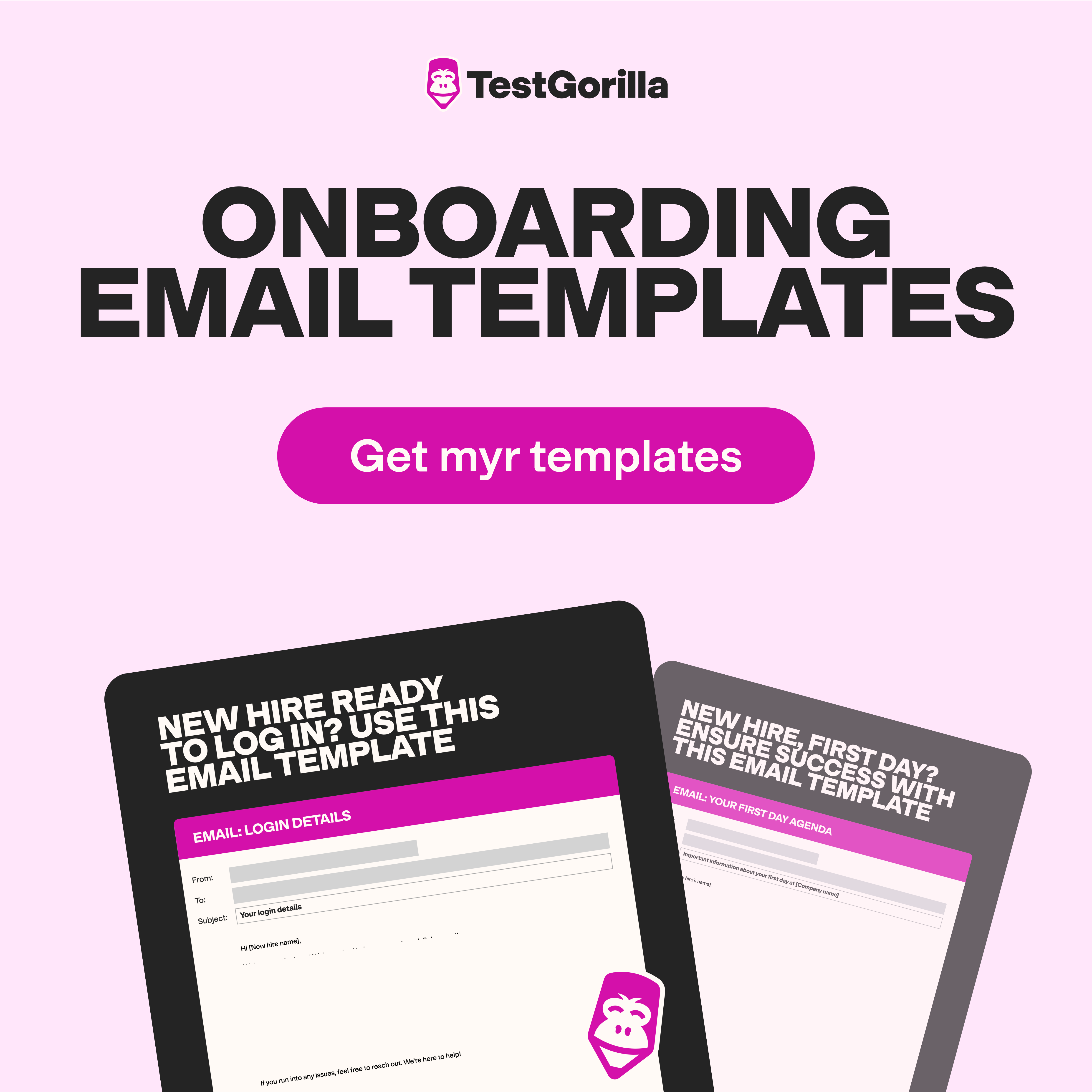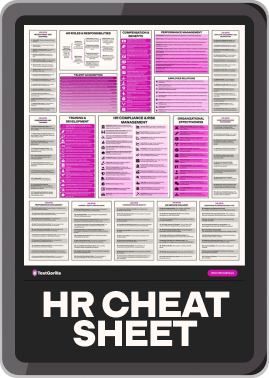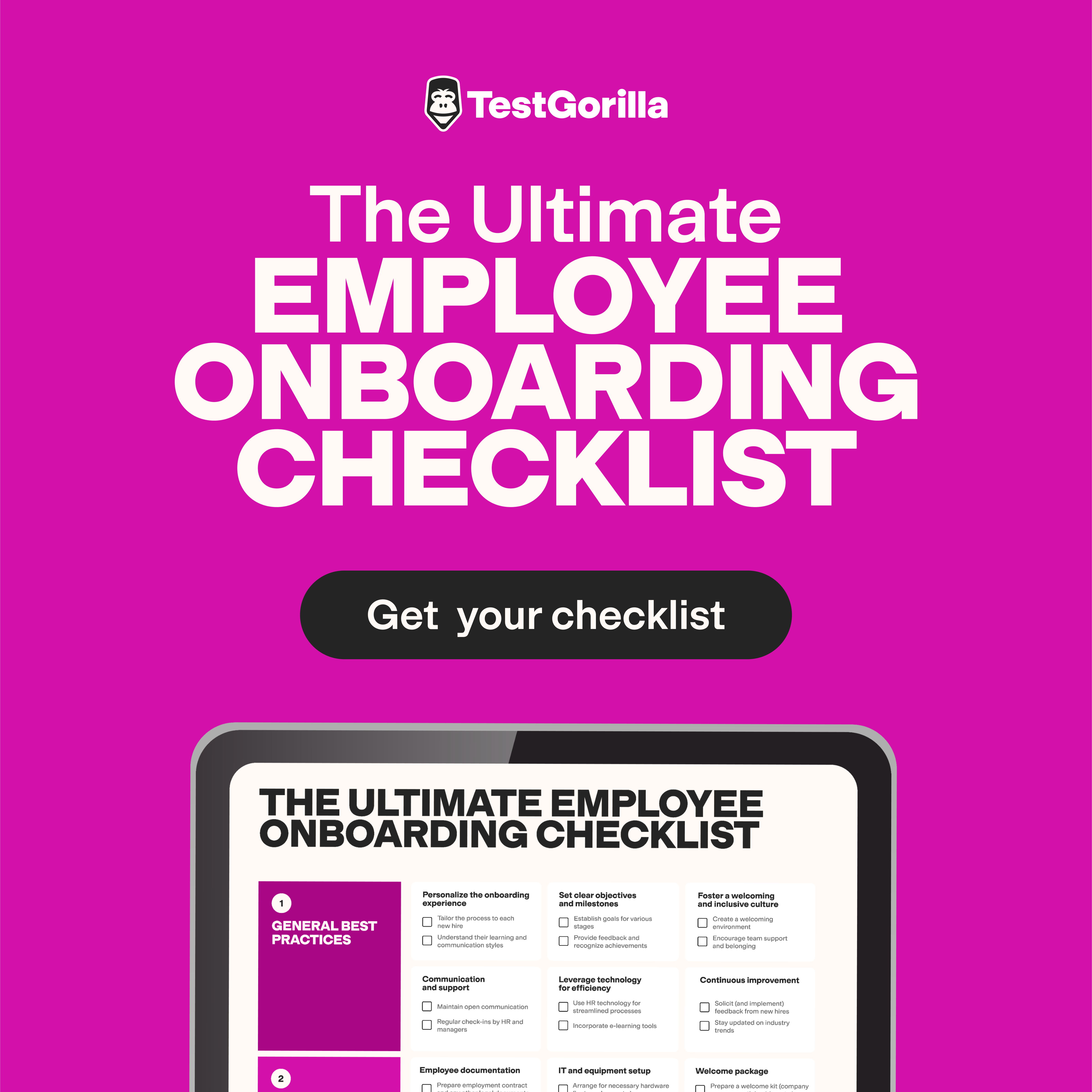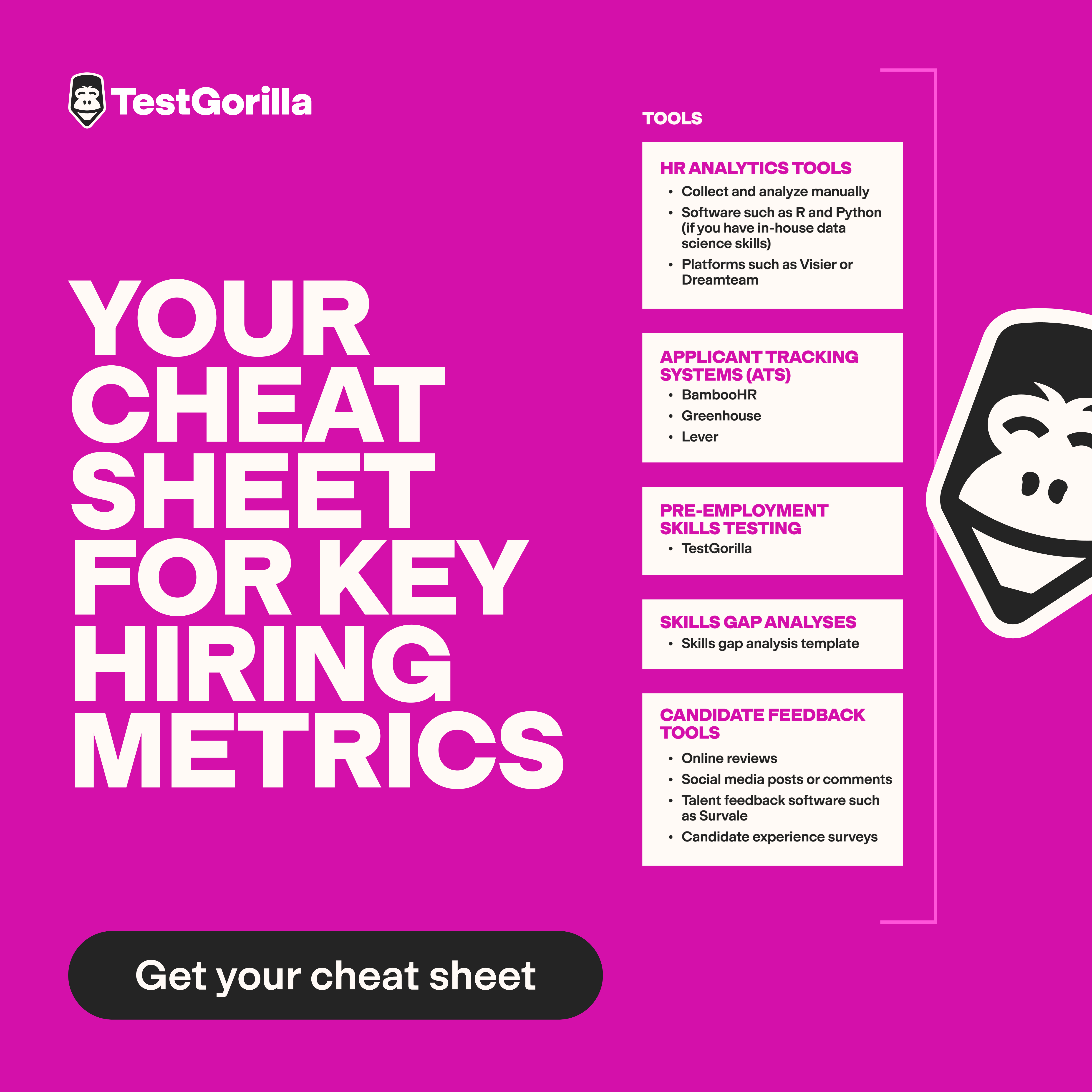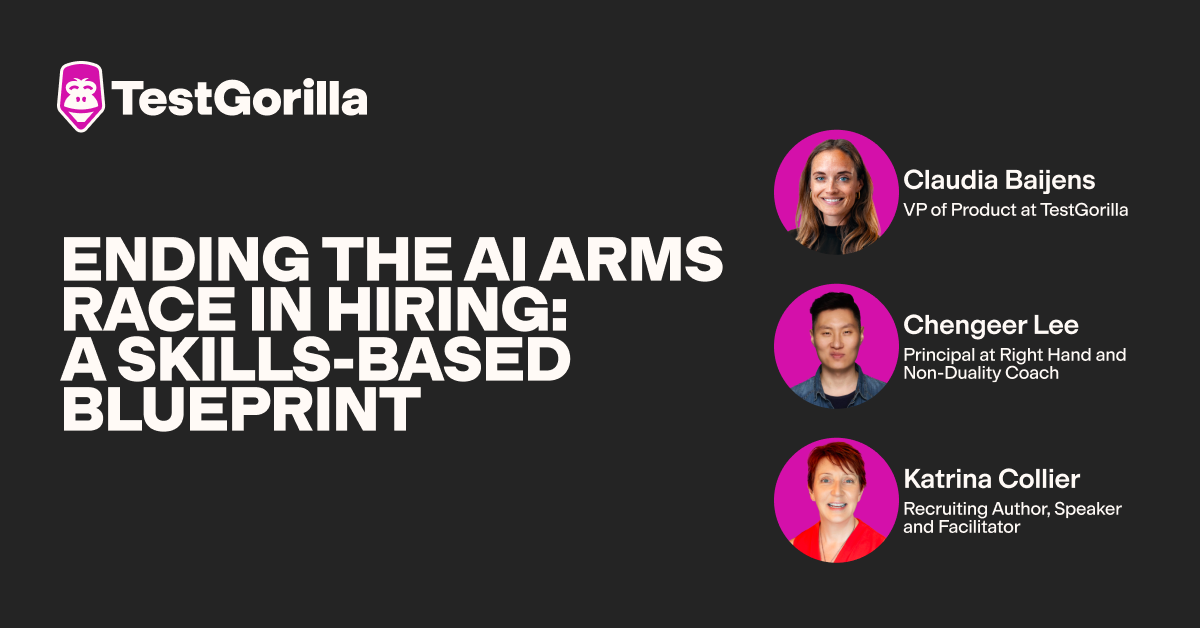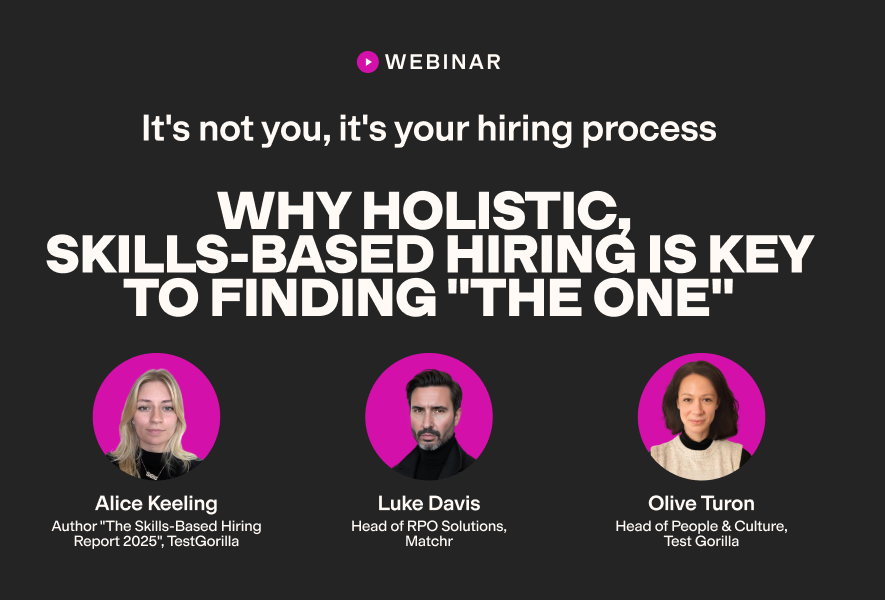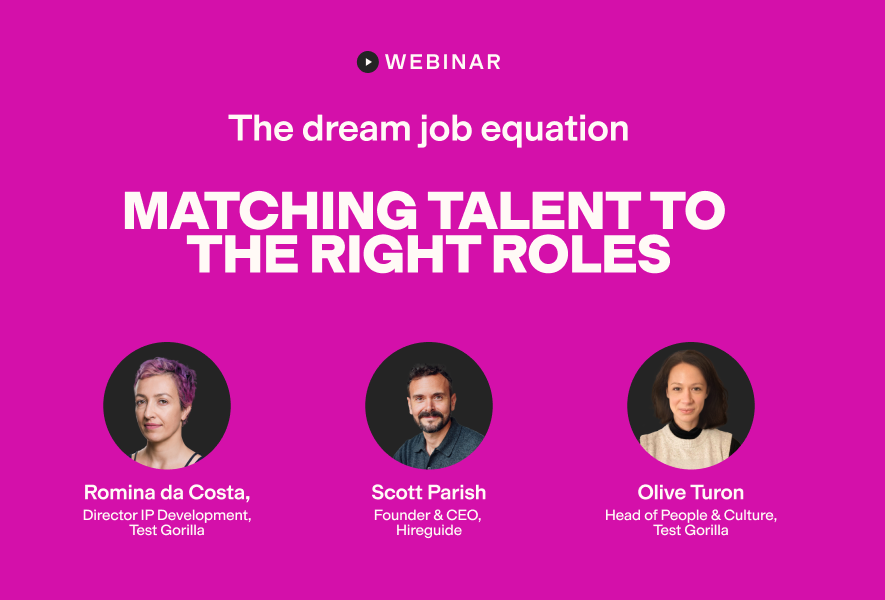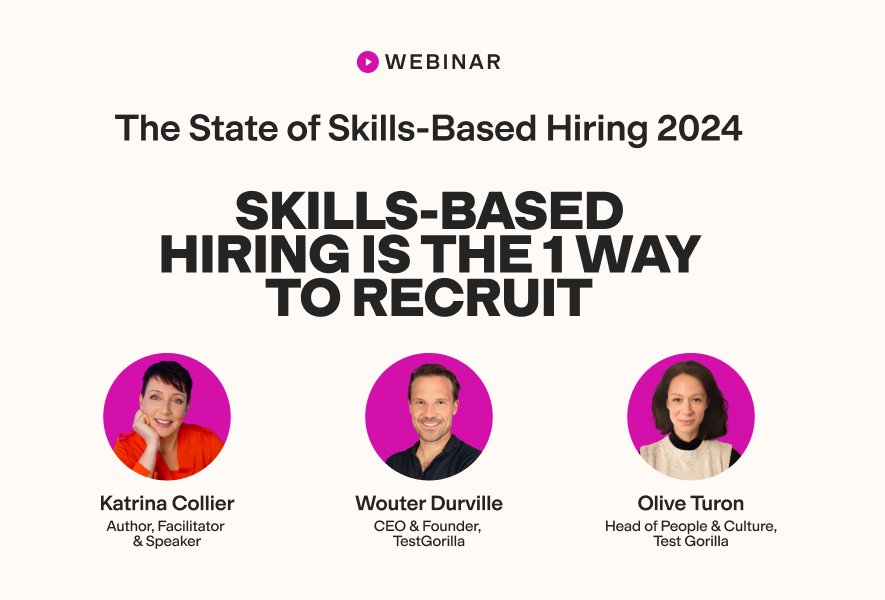According to TestGorilla’s latest State of Skills-Based Hiring report, 63% of employers say it’s harder to find talent than it has been in the past.
We’ve heard all the common excuses: “We’re facing a labor shortage.” “We get loads of applications, but no one’s ever qualified.” And, our personal favorite, “Gen Z doesn’t want to work anymore.”
Here’s the reality, though: The same survey revealed that 70% of job seekers are struggling to find employment. Clearly, the talent is out there – you’re just not landing them.
Ready for a truth bomb? Maybe it’s not them. Maybe it’s you.
You have to ditch the old recruiting funnel
“I've been reflecting on a frustrating pattern lately: despite all the recruitment tools, AI-based matching, and platforms out there, hiring great talent seems to be getting harder, not easier.”
– User in the r/recruiting subreddit
The hiring landscape has changed a lot in the past few years, and if you’re still clinging to outdated models like the traditional recruiting funnel, it’s no wonder you’re struggling to find a good match.
What's a recruiting funnel?
Similar to a sales funnel, a recruiting funnel is a model that visualizes each stage of the hiring process.
It starts wide at the top, where you attract your candidates or leads, gets narrower through each progressive stage (job awareness, applications, screening, online tests, interviews, job offers, etc.), and ends at its narrowest point, where you’ve successfully made a new hire and filtered out everyone else along the way.
It's a neat and easy way to picture your hiring process from start to finish. But it's not the most effective model to use today, when competition is high, hiring is hard, and talent is less stable.
Problems with the traditional recruiting funnel
Employers are obsessed with the top of the funnel
The funnel approach forces you to treat recruitment like a numbers game: cast the widest net possible, then hope the right ones make it through. In a desperate bid to attract top talent before the competition, employers are spending significant time and money on more job ads, more posts on job boards, more outreach, and more job applicants.
But more doesn’t mean better.
Speaking to TestGorilla, Andrea Hoffer, Talent & AI Partner at aha! Talent Experts, shares a story about a large client who fell into this trap: “They were pouring money into sponsored ads on Indeed and Ziprecruiter and found they never had good candidates.”
At some point, you have to ask: Is getting as many applicants as possible really helping you hire better people, or is it just keeping you bogged down and busy?
The funnel leads to the ‘drop-offs are normal’ mindset
When you treat recruiting like a volume game, you come to accept candidate drop-offs as an inevitable part of the process, rather than taking a step back to ask why the candidate dropped off at all.
The funnel model focuses nearly all the attention at the top (as we’ve discussed), and then a bit at the bottom – those who came out the other side. The problem with this is that you could be losing the best candidates somewhere in the middle, and you’ll never know why. You’ll keep thinking it’s a talent problem when it could have been an easy process-based fix.
For example, when Hoffer’s team examined their client’s hiring process, they discovered exactly why the clients were struggling to find qualified candidates despite their sourcing efforts.
“We dug into their ATS and found hundreds of qualified candidates that were ‘lost’ in the tech,” Hoffer tells us. Once the client resolved this problem, they made 42 successful hires and optimized their sourcing strategy.
It gives you ‘funnel vision’
According to LinkedIn’s Future of Recruiting report, 44% of employers track conversion rates between stages in the hiring funnel. Most applicant tracking systems (ATS) include these metrics in their dashboards. This way, it’s easy to see how many candidates applied, how many progressed to online assessments, interviews, offers, and onboarding.
A report by AIHR highlights four of the most frequently used recruiting metrics:
Time-to-fill: Days from job posting to offer acceptance
Time-to-hire: Days from the top of the funnel (application) to the bottom (job offer acceptance)
Source of hire: Which channels brought in the most successful candidates at the top of the funnel
First-year attrition: How many new hires left within the first year
While these metrics help teams measure efficiency and top trends, they don’t reveal everything. Crucially, they don’t show you how candidates feel during the process.
This gap is real. The LinkedIn Future of Recruiting report found that only 27% of employers look at candidate experience data, despite 70% believing it's important. If you’re not measuring what it’s like to go through your hiring process, you’re missing key context behind your numbers.
Why candidate experience matters
We recently read a story in the BBC about Mike Conley, a software engineering manager who dropped out of a recruitment process after three interviews once he learned there were six more rounds to follow.
“When I responded to the internal HR, I even asked, ‘Are these the final rounds?’” he shared. “The answer I got back was, ‘We don’t know yet.’” Conley let the job opportunity go without pursuing the rest of the interview process.
That happened in early 2021. Four years later, not much has changed. Long, unclear hiring pipelines are still common – and just as off-putting. In June 2025, it was reported that 60% of candidates abandon long or cumbersome application processes.
And it’s not just about interview fatigue. Poor communication is just as damaging. As one individual shared on Reddit, “Right now, I'm applying to 10–20 places a day and not getting a single call back. I message recruiters – they ignore me. I keep seeing the same jobs, reposted week after week after week. Jobs that I have applied for and have all the right experience for. I genuinely don't know what's going on.”
It’s easy to chalk that up to volume or bandwidth. But from the candidate’s side, it feels like shouting into the void.
Candidate experiences – both bad and good – stick. They can make or break your ability to acquire talent, and they even impact your employer brand for future candidates. That Reddit post? The author could’ve just as easily posted on LinkedIn, Glassdoor, TikTok, or another social media site, publicly shaming the company.
So, the question is: Which candidate experience do you want your company to be known for?
The funnel is a one-way street
The bigger problem is that most teams don’t just ignore candidate experience – they discard it. Once a candidate drops off, they're gone. No check-ins. No follow-ups. No second chances.
This is a massive missed opportunity, especially in a market where finding talent is hard enough.
We need a model that's a little less linear and a little more dynamic – one that doesn’t just track drop-offs but learns from them, one that re-engages past applicants who could be strong contenders for the next job.
Otherwise, you're just rinsing and repeating the same process, hoping for different results. And according to Einstein (or so legend has it), that’s the definition of insanity.
Why a recruiting flywheel trumps the funnel
At TestGorilla, we believe it’s time to go beyond the funnel and turn recruiting into a growth flywheel.
“Wait, what is a recruiting flywheel?” you ask.
A recruiting flywheel treats recruitment like a cycle. Every candidate interaction and insight, whether hired or unhired, sits at the center of the wheel and adds energy to it, building momentum and improving the process with each spin. It helps you build a system that continually learns and improves with each round of hiring.
The most forward-thinking employers are already one step ahead and understand the importance of the flywheel.
“Most teams only hire people in one direction. [...] It's not enough to just fix leaks when you treat recruiting like a live, breathing process. Each round, you build something stronger,” Béatus Hoang, Senior Growth Manager at Semrush’s Exploding Topics, tells us. “That’s how you go from guessing to real growth that builds on itself.”
With that in mind, let's look at how the recruiting flywheel solves the problems in a traditional funnel:
Problems with the funnel approach
| How the flywheel solves it |
Companies pour too much energy into the top of the funnel, increasing quantity but not quality of applicants. | Quality over quantity. The flywheel isn’t about casting a wider net. It’s about creating a feedback loop.
You track which channels yield better candidates, which questions work best on application forms, and which job descriptions perform most effectively. You then use this information to refine the sourcing process. |
Candidate experiences are often undervalued, and drop-offs are considered a normal part of the process. | The flywheel captures candidate behavior at every stage, and drop-offs become data.
Instead of focusing on just conversions from one stage to the next or cutting time to hire, the flywheel uses every nanoparticle of information: which application questions candidates drop off at, what tests candidates are quitting or failing at, which interviewer is seeing most ghosting post-interview, and what candidate surveys are really indicating.
All this data is collected at the center of the flywheel and used to fuel momentum for future hiring processes. |
Candidates are either hired or forgotten after they’ve been through the funnel. | The flywheel doesn’t just look at who got hired – it tracks everyone who entered the system. And once they’re in, they don’t leave.
You can either re-engage strong past candidates who weren’t the right fit then but could be now by building and nurturing your talent pipeline.
Or, you can use data from the not-so-strong candidates to refine your sourcing process. Every piece of information provides long-term value. |
The best insights on HR and recruitment, delivered to your inbox.
Biweekly updates. No spam. Unsubscribe any time.
Adding fuel to the flywheel with TestGorilla's intel and analytics
Most ATS platforms track big-picture stats, including time to hire, cost per hire, and funnel conversion rates. But, like we’ve said, these metrics don’t touch on the why. They give you a summary, and that’s not enough to keep your hiring engine running at full speed.
Even Microsoft is pushing for better clarity. As Chuck Edward, Head of Recruiting at Microsoft, said in a recent report:
“We’re making sure our recruiters know the fundamentals of data entry and data management – it sounds so basic, but it’s essential to getting real insights. At our scale, the little details matter so much.”
He’s right – and we got tired of waiting for someone else to come up with an effective solution. So, we’ve taken matters into our own hands with TestGorilla Analytics (currently in beta).
In addition to offering hundreds of talent assessments to screen applicants, TestGorilla now gives you real-time visibility into how your assessments and hiring funnel are performing, all directly within your TestGorilla account.
Because small details aren’t small when they cost you great candidates.
How TestGorilla Analytics works
With TestGorilla Analytics, you’ll see two intuitive dashboards within your account:
Account level
You get a bird’s-eye view across your entire TestGorilla workspace. You can track how candidates move from invitation to test completion, monitor completion rates and average scores, and see which assessments are used most – and how they’re performing. You can even drill into recruiter activity, like who’s sending the most invites or seeing the strongest results.
These insights help you spot specific issues: unopened test invites, overly long or complex assessments, or tests that don’t quite match the skills you're hiring for. With this view, you can quickly identify friction points and refine your overall hiring strategy.
Assessment level
At this level, things get even more precise. You can see exactly where candidates exit the process – whether that’s before the assessment, halfway through, at qualifying questions, or some other point. You’ll also see how long candidates spend on different parts of each test, helping you measure both difficulty and engagement.
This view lets you really get into the nitty-gritty – for example, identifying and updating a question that’s consistently causing drop-offs or confusion.
One of our customers, Rachel Joffe, recently shared how powerful the assessment-level view in Analytics has been: “Seeing time-per-question and knowing where candidates drop is a total game-changer.”
→ Curious to know more? Book a live demo to see TestGorilla Analytics in action.
Boost hiring momentum like never before
Hiring has become harder, there’s no doubt about it. Yet most recruiters don’t understand why, especially since hiring technology has evolved so much.
The easy explanation is a talent shortage. But we think the real problem is that companies are still relying on an outdated recruitment funnel that filters people out and forgets what it has learned. This simply doesn’t work anymore.
Modern hiring demands a better way of thinking and using data – something dynamic and self-improving. That’s the recruitment flywheel. It learns from every tiny data point and piece of intel (like those provided by TestGorilla Analytics) and uses that insight to keep improving, round after round. Ready to fuel your recruitment flywheel? Create a free account with TestGorilla today.
Related posts
You've scrolled this far
Why not try TestGorilla for free, and see what happens when you put skills first.


